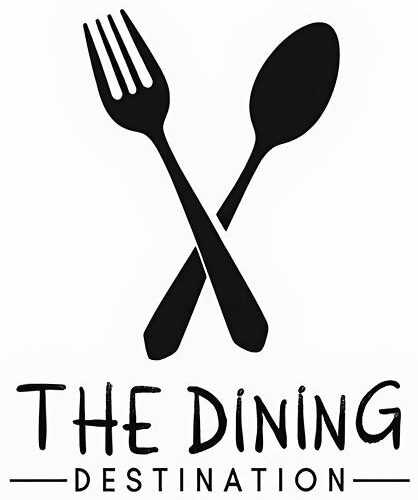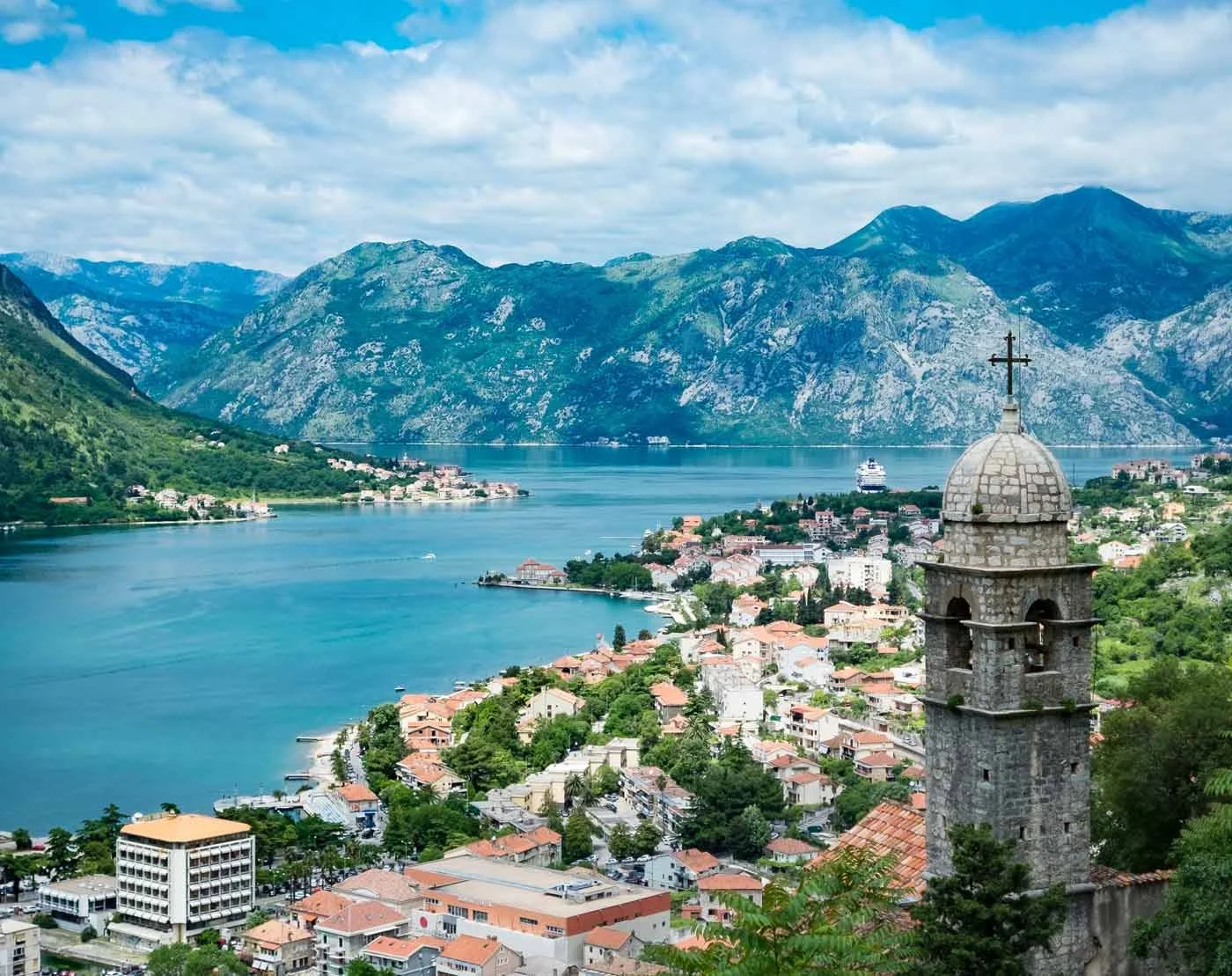Find Unforgettable Flavors Around the World
Global culinary tours are organized food-focused travel experiences that take you beyond tourist attractions to explore authentic local cuisines, cooking techniques, and food traditions. These immersive journeys connect travelers with local cultures through shared meals, market visits, cooking classes, and guided tastings.
“Years after a trip, you can still remember the taste of fresh, juicy olives in Greece or the fragrant smell of pho simmering in Vietnam.” – Intrepid Travel
At a glance: What are global culinary tours?
- Street food tours: Guided walks exploring local street vendors, markets and casual eateries
- Cooking classes: Hands-on instruction from local chefs using traditional techniques
- Wine & beverage tours: Tastings at vineyards, distilleries, coffee farms and tea plantations
- Market visits: Exploring vibrant food markets with expert guides who explain local ingredients
- Multi-day culinary holidays: Immersive experiences combining all of the above across regions
Food tourism has exploded in popularity because it offers what many travelers seek most: authentic connections with local people and cultures. According to industry data, small-group culinary tours typically limit participants to 12-16 people to ensure intimate, personalized experiences.
These journeys aren’t just about eating delicious food—they’re about understanding the stories, traditions and people behind each dish. Whether you’re making pasta alongside an Italian nonna, sampling street tacos in Mexico City, or learning about spice blends in a Moroccan souk, culinary tours create memorable sensory experiences that standard sightseeing simply can’t match.
The best part? Most tours accommodate dietary restrictions, including vegetarian, vegan, and gluten-free options, making global food exploration accessible to nearly everyone.

What Is a Culinary Tour?
A culinary tour is a travel experience that places food at the center of your journey, using cuisine as the lens through which you find a destination’s culture, history, and people. Unlike traditional tourism that focuses on landmarks and monuments, culinary tourism engages all your senses and creates memories that linger long after your suitcase is unpacked.
As Carol, who joined a private cooking tour in Italy, warmly shared: “The mix of cultural, foodie, and authentic Italian lifestyle experiences was spot on! We fitted in olive picking, truffle hunting, cheese making, pizza and pasta making—seamlessly moving from one activity to the next.”
These experiences are designed to be hands-on rather than passive. You don’t just eat the food; you learn its origin story, meet the passionate people who produce it, and often roll up your sleeves to prepare it yourself. The magic of culinary tours lies in how they blend education with pure enjoyment, leaving you with both new skills and flavor memories to treasure.

What makes these journeys particularly special is how food acts as a powerful memory trigger. Years later, the fragrance of simmering pho can instantly transport you back to that tiny street stall in Vietnam. The taste of fresh paella might suddenly bring back the sea breeze from that seaside restaurant in Spain. These sensory connections create deeper, more lasting travel memories than photographs alone could ever capture.
Plant-based travelers needn’t worry either – culinary tourism has evolved to accept all dietary preferences, with many tours now offering vegetarian and vegan-friendly options that showcase local plant-based traditions.
More info about food-travel evolution
Why Choose Global Culinary Tours?
Global culinary tours offer a feast of advantages that make them worth every penny:
Authenticity is perhaps the biggest draw. Local guides take you to places you’d likely never find on your own—family-run establishments passed down through generations, hidden gems tucked away in residential neighborhoods, and local favorites that rarely make it into guidebooks.
Storytelling enriches every bite you take. Professional guides share the context and history behind each dish, turning a simple meal into a cultural education. As one traveler on a Vietnam tour noted: “Our guide’s explanations of Vietnamese specialties and traditions made the experience so much more meaningful than if we’d just wandered into restaurants on our own.”
The small group atmosphere creates intimate connections. With most tours limiting participants to 12 people, you’ll have plenty of opportunities to ask questions, interact with food producers, and bond with fellow food lovers over shared findies.
Your tour also creates positive economic impact in the communities you visit. Your tourism dollars go directly to local businesses, supporting small producers and helping preserve traditional food practices that might otherwise fade away. According to the World Food Travel Association, culinary tourism serves as a powerful tool for sustainable economic development in destinations worldwide.
Finally, the expert navigation these tours provide is invaluable. Dietary restrictions, language barriers, and unfamiliar ingredients can make independent food exploration challenging in foreign countries. Guides help you steer these complexities with ease, ensuring everyone in your group finds something delicious to enjoy.
As one happy participant on a food tour in Hoi An, Vietnam remarked: “Our guide was professional and personable. The street food was amazing, and I don’t think we would have found these places on our own—or had the courage to try them without someone showing us the way!”
The Main Types of Global Culinary Tours
Global culinary tours come in all flavors and sizes, each offering a unique way to taste your way around the world. Whether you have a few hours or a few weeks, there’s a food trip waiting that matches your appetite for findy.

Hungry for more global street food inspiration? Check out our Street Food Diaries link for mouthwatering stories from around the world.
Street-Food Safaris
There’s something magical about eating where the locals eat. Street-food tours typically last just 3-4 hours but pack in 6-8 different tastings that tell the authentic story of a place through its everyday foods.
You might find yourself weaving through the neon-lit night markets of Taipei, where the sizzle and steam of food stalls create an intoxicating atmosphere. Or perhaps you’ll be sampling handmade tacos from Mexico City vendors who’ve perfected their craft over generations. In Singapore, your guide might introduce you to the complex world of hawker centers, explaining how these culinary institutions have preserved traditional recipes for decades.
“Tasting what the locals eat everyday gives you a true sense of place that fancy restaurants can’t always provide,” explains one Secret Food Tours guide.
These accessible trips typically cost between $50-100 per person—a small price for memories that linger long after the last bite.
Hands-On Cooking Retreats
For those who want to bring more than just memories home, cooking classes and retreats offer skills you’ll use for years to come.
Picture yourself in a sun-drenched Tuscan kitchen, flour dusting your hands as you learn the secrets of perfect pasta from a nonna who’s been making it for 60 years. Or imagine mastering the complex balance of sweet, sour, salty and spicy that makes Thai cuisine so distinctive, guided by a chef in Chiang Mai who knows exactly how to help beginners succeed.
Desiree, who recently participated in cooking classes in Mexico, shared her experience: “We enjoyed two cooking classes in Oaxaca and Puebla. Tasting what we made was even better!”
These hands-on experiences typically include market visits to source fresh ingredients, expert instruction, and the immense satisfaction of enjoying the meal you’ve created. Options range from half-day classes to week-long immersive retreats where you’ll build a repertoire of authentic dishes.
Wine, Beer & Beverage Trails
Some of the world’s most beloved culinary traditions exist in liquid form. Beverage-focused tours take you to the source, whether that’s:
Vineyards in France’s Bordeaux region, where you’ll learn how terroir influences every sip of wine. Craft breweries in Belgium, where centuries-old traditions meet modern innovation. Sake breweries in Japan, where you’ll find the meticulous process behind this iconic rice wine. Coffee farms in Colombia, where you’ll follow beans from harvest to cup. Tea plantations in Sri Lanka, where you’ll gain appreciation for the skilled hands that pluck and process the perfect leaves.
These tours often include production facility visits and expert-led tastings, frequently paired with complementary foods that improve the flavors in your glass.
Market & Producer Visits
Markets are where culture, commerce and cuisine collide—making them perfect windows into local life. Market tours might take you to Tokyo’s legendary Tsukiji Outer Market at dawn, or have you shopping alongside a chef at Barcelona’s colorful La Boqueria.
Producer visits go straight to the source: cheese caves in rural France, olive groves in Greece, or chocolate factories in Belgium. These experiences often include generous tastings and opportunities to purchase artisanal products directly from the people who make them.
Food photographers particularly love these tours for their vibrant colors and authentic moments. There’s something special about capturing a cheese maker’s weathered hands as they demonstrate a technique passed down through generations.
Multi-Day Culinary Holidays
For those seeking total immersion, multi-day culinary holidays combine all these experiences into one cohesive journey. Imagine spending a week eating your way through Sicily’s diverse regions, each with its own distinctive specialties shaped by centuries of different cultural influences.
Or picture yourself on a 10-day journey through Japan, from Tokyo’s cutting-edge cuisine to Kyoto’s traditional kaiseki meals. These comprehensive experiences typically span 7-14 days and might include cooking classes, market visits, restaurant meals, and producer tours—all carefully orchestrated to tell the complete culinary story of a region.
“This was our second international culinary tour in 3 years and we have plans for a third,” shared one enthusiastic traveler. “The accommodations, food and activities were all top-notch. The attention to detail during planning and execution are a testament to how truly connected the owner is with the local guides at each destination.”
Whether you choose a quick street food tour or a multi-week culinary odyssey, these global culinary tours offer something that ordinary travel can’t—a chance to connect with cultures through their most universal language: food.
Culinary Capitals You Can’t Miss
Let’s face it – some cities just know how to eat. While you’ll find delicious meals in countless corners of the world, certain destinations have earned their status as true food meccas. These culinary capitals offer the perfect backdrop for global culinary tours, where food traditions run deep and memorable dining experiences await around every corner.
Tokyo, Japan – Umami Meets Innovation
Tokyo didn’t earn more Michelin stars than any other city by accident. This sprawling metropolis treats food with reverence, from humble ramen shops tucked beneath train tracks to elaborate kaiseki restaurants where each dish resembles edible art.
When you visit Tokyo, prepare for a masterclass in umami – that elusive fifth taste that makes Japanese cuisine so addictive. The Japanese concept of shokunin (the dedication to mastering one’s craft) shines through in every perfectly formed piece of sushi and delicately tempured vegetable.
Must-try experiences here include getting your hands floury during a soba noodle-making workshop, wandering through Tsukiji’s outer market with its dazzling array of seafood, and slurping your way through different regional ramen styles. Even convenience store food in Japan will surprise you with its quality and attention to detail – their egg sandwiches alone are worth crossing oceans for!
Mexico City, Mexico – Heritage on a Plate
When UNESCO recognizes your country’s entire culinary tradition as an Intangible Cultural Heritage of Humanity, you know you’re doing something right. Mexico City serves as the perfect showcase for this celebrated cuisine, offering an incredible mix of regional specialties all in one vibrant metropolis.
“Mexican cuisine is a complete sensory experience,” as one local guide told me. “Each dish tells a story of our indigenous roots, colonial influences, and modern innovations.”
Don’t leave without sampling tacos al pastor – a perfect example of cultural fusion, developed by Lebanese immigrants who adapted their vertical spit-roasting technique for Mexican palates. Make time to explore the sensory overload that is La Merced market with a knowledgeable guide who can help you distinguish between dozens of chile varieties. And no visit is complete without learning about the complex, labor-intensive mole sauces that can contain upwards of 30 ingredients carefully balanced to perfection.
Barcelona, Spain – Tapas & Tradition
Barcelona seduces food lovers with its perfect blend of Catalan traditions, Mediterranean influences, and avant-garde culinary techniques. This is a city where eating is never rushed – meals unfold at a leisurely pace, with conversation flowing as freely as the local cava.
The colorful stalls of La Boqueria market provide the perfect introduction to Catalan food culture, though locals will tell you it’s become increasingly tourist-oriented. For a more authentic experience, join a vermouth tour through the winding streets of El Born, learning about this fortified wine’s central role in Barcelona’s social fabric.
Barcelona also offers the perfect base for learning to make proper paella with locally-sourced seafood. And don’t miss the chance to participate in a pintxos crawl, where you’ll hop between bars sampling these northern Spanish bite-sized delights, each one secured to a slice of bread with a toothpick (pintxo means “spike” in Basque).
Bangkok, Thailand – Floating-Market Flavors
Bangkok’s street food scene delivers complex, multi-layered flavors at astonishingly accessible prices. This is a city where some of the most memorable meals come from humble carts with plastic stools for seating.
Thai cuisine is all about balance – the perfect harmony of sweet, sour, salty, and spicy elements in each dish. You’ll gain a new appreciation for this balancing act during a cooking class, where you might learn to pound aromatic herbs and chilies into a perfect curry paste.
Essential Bangkok food experiences include taking a longtail boat through the photogenic Damnoen Saduak floating market, sampling regional specialties like khao soi (northern curry noodles with their addictive combination of crispy and soft textures), and exploring the sensory overload of Chinatown after dark, when seafood vendors set up their sizzling woks along Yaowarat Road.
New York City, USA – Global Bites in One Borough
As a city built by immigrants, New York offers an best diversity of authentic global cuisines – often without the need for a passport. In a single day, you could feasibly enjoy Chinese breakfast, Uzbek lunch, and Dominican dinner, all prepared by people with deep connections to these culinary traditions.

Here at The Dining Destination, we’re proud to call New York home and regularly explore its changing food landscape. We love taking visitors on borough-hopping trips to sample the incredible diversity of our ethnic enclaves – from the Himalayan momos of Jackson Heights to the Caribbean flavors of Flatbush.
Don’t miss the chance to spark friendly debate by joining a pizza tour to determine the best slice in the city (spoiler: there’s no consensus). The weekend Smorgasburg market offers a perfect sampler platter of the city’s food innovation, while historic Essex Market on the Lower East Side connects you to New York’s immigrant food history.
New York’s culinary scene perfectly reflects its population – diverse, ambitious, and constantly reinventing itself while still honoring traditions.
Planning Your Global Culinary Trip
Planning a delicious journey through the world’s food scenes doesn’t have to be overwhelming. With a bit of thoughtful preparation, you can create an unforgettable taste trip that suits your interests, dietary needs, and budget.
Budget Considerations
Global culinary tours come in all flavors and price points, making food tourism accessible whether you’re watching your wallet or ready to splurge:
A quick street food tour sampling local specialties might cost just $50-100 for a few delightful hours, while an immersive cooking class with a local chef typically ranges from $75-200 depending on the location and complexity. Day-long market tours that include multiple meals fall between $150-300, and for those seeking the full experience, multi-day culinary holidays start around $2,000 and can reach $7,000+ for luxury experiences.
The good news? Many tour operators offer convenient payment plans to make these experiences more accessible. Intrepid Travel, for instance, offers food-focused trips with impressive 4.8/5 ratings from over 800 travelers, with options ranging from quick city tours to comprehensive country explorations.
Best Seasons for Culinary Travel
Timing can make all the difference when planning your food trip:
Fall in Europe brings abundant harvest festivals and fresh produce, while spring in the Southern Hemisphere offers similar bounty. If you’re dreaming of hunting white truffles in Italy or sampling cherry blossom-inspired treats in Japan, you’ll need to plan around these seasonal specialties. Food festivals like Germany’s Oktoberfest or Mexico’s vibrant Day of the Dead celebrations offer once-a-year cultural immersions centered around food.
Don’t forget practical considerations too—monsoon season might dampen your street food trips, while perfect spring weather might make outdoor dining experiences much more enjoyable.
Choosing the Right Tour

Finding your perfect food tour match comes down to a few key factors. Group size matters tremendously—tours with 12 or fewer participants provide more intimate connections with guides and food producers. The most memorable experiences often come from local guides with deep knowledge and personal connections to regional food traditions.
Check what’s included in your tour price—transportation, number of tastings, and whether you’ll enjoy full meals or smaller samples can vary widely. Also consider the activity level—some tours involve significant walking or standing, which might be important if mobility is a concern.
Finally, think about your personal interests. Do you want to dive into street food culture, learn cooking techniques, explore high-end dining, or enjoy a mix of everything? The best tour for you aligns with your specific food passions.
Sustainability in Global Culinary Tours
Today’s conscious travelers are increasingly seeking food experiences that nourish both themselves and the planet. Responsible global culinary tours accept sustainability through several thoughtful practices.
The best tours support small, family-owned businesses rather than international chains, feature locally-sourced seasonal ingredients to reduce carbon footprints, and minimize food waste and single-use plastics. Many operators, like Intrepid Travel, now include at least one plant-based meal on all their food trips, giving travelers a taste of sustainable eating practices they can bring home.
“Our food trips directly benefit local economies,” explains Intrepid Travel. “When you purchase from street vendors, dine at family-owned restaurants, learn from local guides, and support community projects, you’re investing in the places and people who make these destinations special.”
Latest research on sustainable food travel
Navigating Dietary Needs
Having dietary restrictions doesn’t mean missing out on delicious trips around the world. Most tour operators can accommodate special diets with advance notice—whether you’re vegetarian, vegan, gluten-free, or have religious dietary requirements.
Before your trip, learn a few key phrases related to your dietary needs in the local language. This simple preparation can make a world of difference when communicating with food vendors. For severe allergies or very complex restrictions, consider booking a private tour where the guide can ensure your safety at every stop.
Some regions present specific challenges—fish sauce is ubiquitous in Southeast Asian cooking, making vegetarian options trickier to steer—but a knowledgeable guide can help you find delicious alternatives. And it never hurts to pack emergency snacks for unexpected situations!
What to Expect on Tour Day
On the day of your culinary trip, you’ll typically meet your guide at an easy-to-find central location. After friendly introductions and a brief overview of what’s ahead, you’ll be off to your first tasting!
Most tours include 4-8 food stops over several hours, with walking between venues (comfortable shoes are a must!). Your guide will provide cultural and historical context for everything you taste, changing simple bites into meaningful experiences. Most tours include enough food to substitute for a meal, though portions at each stop are usually sample-sized so you can enjoy more variety.
Many tours also build in some free time for shopping or taking photos, and some include hands-on elements like cooking demonstrations or market shopping experiences.
Frequently Asked Questions
Are group size limits strictly enforced?
Yes, most operators cap groups at 12-16 participants to ensure quality experiences and access to smaller venues that couldn’t accommodate larger groups.
Are drinks included in food tours?
It varies widely. Some tours include only water, while others feature local alcoholic specialties or traditional beverages. Check the specific tour details before booking to avoid surprises.
Can children join culinary tours?
Many tours welcome young food explorers, though some have minimum age requirements. Family-specific food tours are increasingly available in major destinations, designed to engage curious young palates.
How much walking is involved?
Most walking food tours cover 1-2 miles over 3-4 hours with multiple stops. Market tours and cooking classes typically involve less walking but more standing time.
What happens in bad weather?
Tours typically run rain or shine, though routes may be modified for comfort. Indoor components like cooking classes offer weather-proof alternatives when the skies don’t cooperate.
Continuing the Journey at Home
The flavors you find don’t have to fade when your trip ends. Many travelers find creative ways to extend their culinary journeys:
Take a virtual cooking class with chefs you met during your travels—many now offer online sessions. Order specialty ingredients online to recreate favorite dishes in your own kitchen. Join online food communities focused on the cuisines you’ve explored to share experiences and recipes.
Host themed dinner parties featuring recipes from your journey, sharing your findies with friends and family. And of course, start planning your next culinary destination based on the flavors that captivated you most.
Tennis Channel French-inspired recipes
“I brought home spices from Morocco that I’m still using a year later,” shared one traveler. “Every time I open that jar of ras el hanout, I’m transported back to that spice market in Marrakech.”
Here at The Dining Destination, we regularly feature recipes inspired by global culinary traditions that you can recreate in your home kitchen, keeping your travel memories alive one delicious bite at a time.
Conclusion

There’s something magical about breaking bread with strangers who quickly become friends over a shared meal. Global culinary tours create these moments of connection that often become the most treasured souvenirs of your travels – more meaningful than any trinket or photograph.
Think about it – while monuments and museums certainly have their place, it’s often the taste of that perfect street taco in Mexico City or the aroma of fresh spices in a Moroccan market that stays with you longest. These sensory memories become time machines, instantly transporting you back to that special moment years later when you taste something similar at home.
Mark Twain once said, “Twenty years from now you will be more disappointed by the things you didn’t do than by the ones you did do.” This wisdom perfectly captures why food-focused travel continues to captivate so many travelers. When you venture beyond tourist zones to eat where locals eat, you find authentic experiences that standard sightseeing simply can’t deliver.
The beauty of culinary travel lies in its accessibility. You don’t need to be a gourmet or food expert to appreciate a warm bowl of pho in Vietnam or freshly made pasta in Italy. All you need is curiosity and an open mind. Food becomes the universal language that bridges cultural divides, even when you don’t speak the local tongue.
Here at The Dining Destination, we’ve seen countless travelers transformed by their culinary trips. From shy tourists who become confident enough to order in the local language by trip’s end, to picky eaters who return home with newfound appreciation for flavors they never imagined trying.
If you’re considering a food-focused journey, here’s our best advice: book early (the most sought-after experiences often fill up months in advance), come hungry both literally and figuratively, and prepare to see the world differently through the lens of food culture.
More info on culinary travel trips
As the French gastronome Jean Anthelme Brillat-Savarin said, “Tell me what you eat, and I will tell you who you are.” Through global culinary tours, you’ll find not just the authentic flavors of your destination but perhaps something deeper about yourself along the way. And isn’t that findy what great travel is all about?







